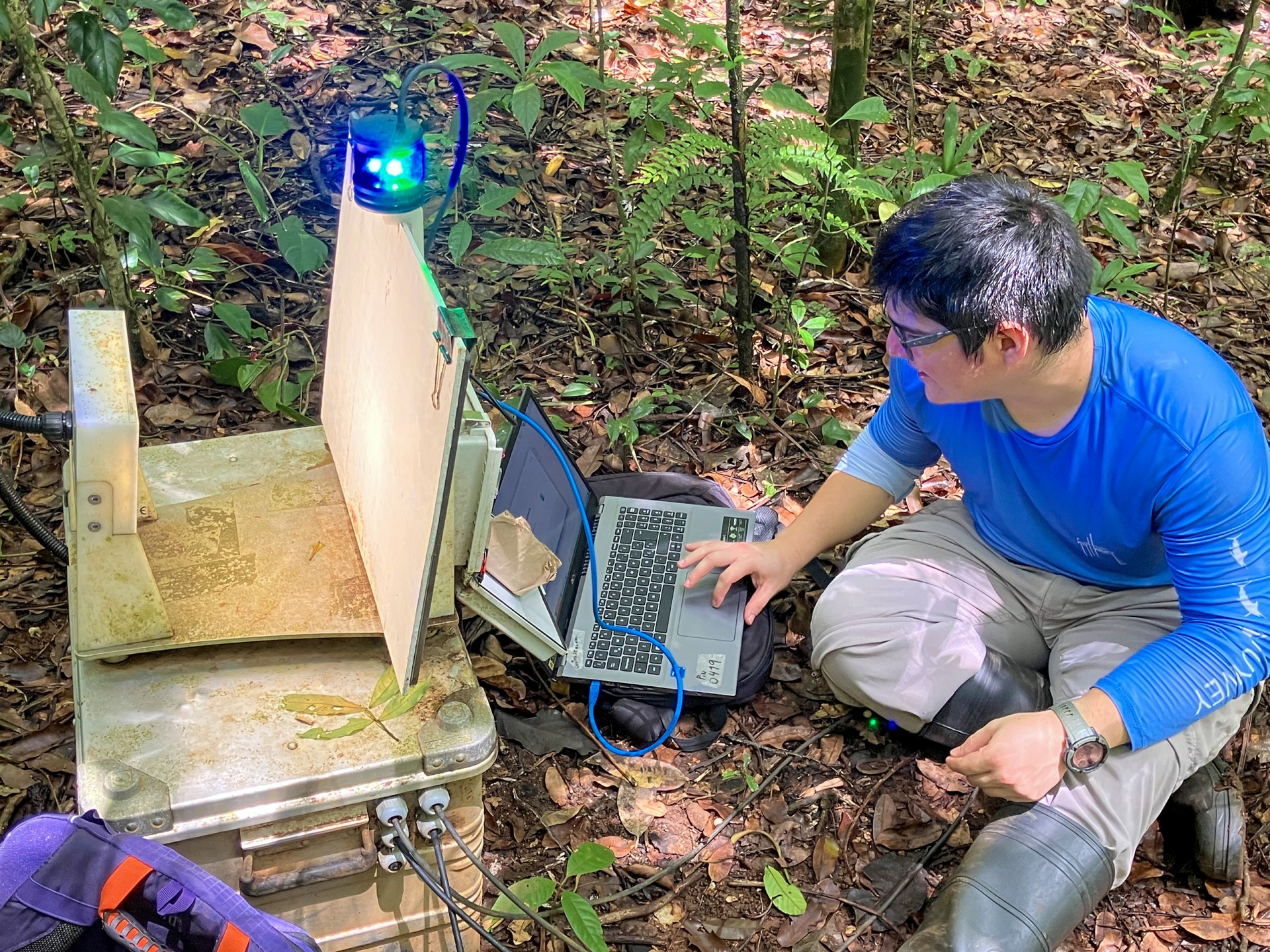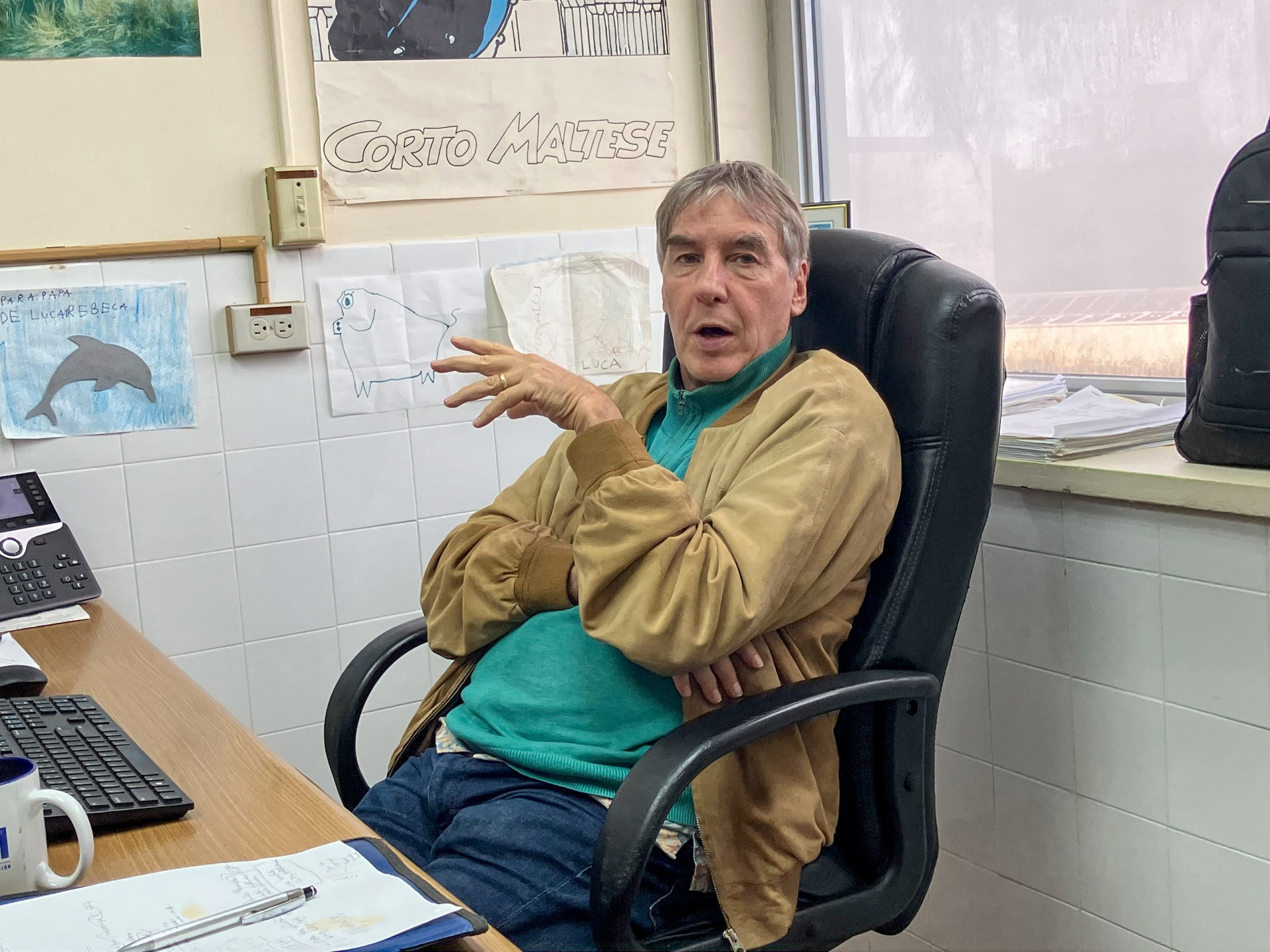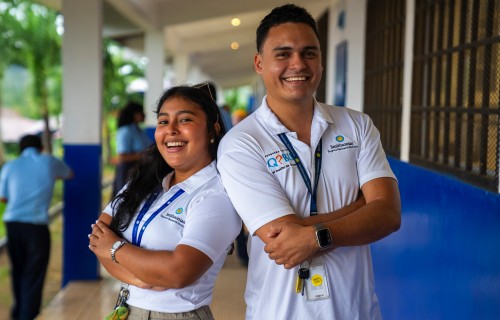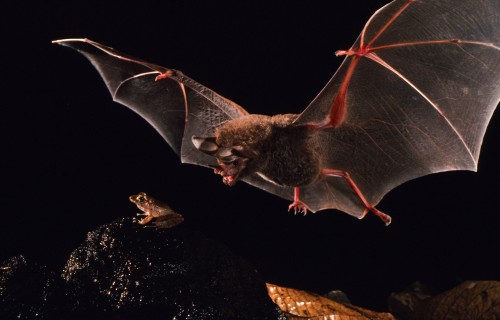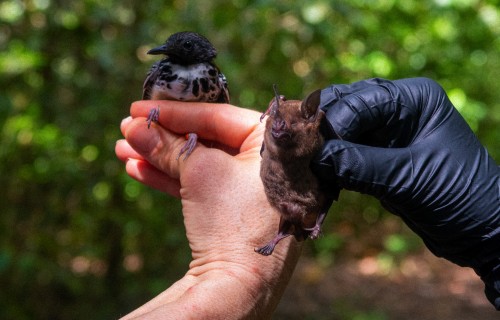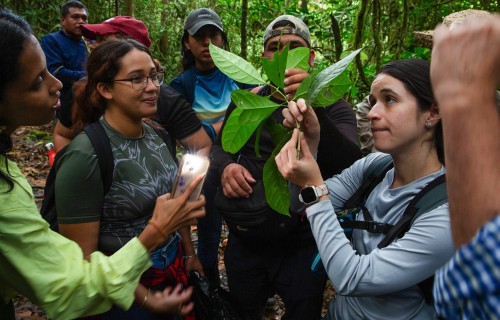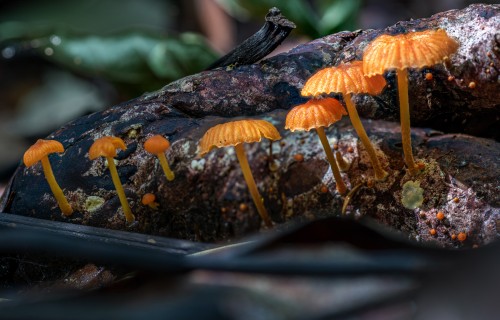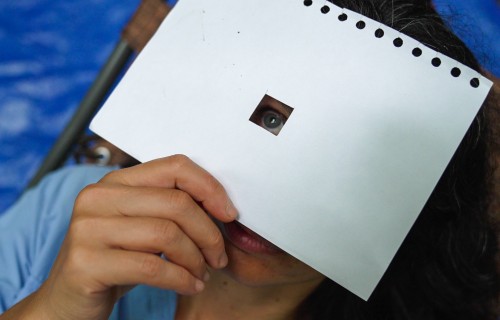Pseudoscorpions: Little guardians of crevices (public talk in Spanish)
Meet
AMI
Who’s AMI? Meet the STRI Arthropod Program’s moth-identifying technology
By: Fern Alling
Through the power of machine learning, an insect photo booth could allow the Arthropod Lab to track all 4,000 moth species on BCI
Though it’s my first time visiting, Barro Colorado Island feels like familiar territory. The oppressive humidity reminds me of North Carolina summers but with the carpet of slick, wet leaves you can find in the fall. I’m wheezing along the trail behind Eduardo Navarro when we run into a golden orb-weaving spider. We stop in our tracks to admire her.
She’s fairly large; if I placed her body in the middle of my palm, her beautiful black-and-yellow legs would stretch beyond it. There are fuzzy patches above her knees, almost like jazzy leg warmers. But now we’re stuck – the narrow, uneven path we’ve been following through the forest is blocked by her web. Navarro begins to carefully pluck at the web, taking care not to sever any essential threads.
Eduardo Navarro examines an image taken by the AMI while he performs routine maintenance. STRI’s units are set up to take over a thousand pictures of moths every week for the researchers to analyze.
Credit: Fern Alling
“We’re going to bother her here, and we’re going to bother her here,” he murmurs. Then, satisfied with his work, he carefully maneuvers around the still-intact strands. I follow as gingerly as I can with my bulky backpack. I’m in awe when we emerge on the other side and the spider remains stock-still, unbothered, her web still standing.
Our destination is on the other side of the spiderweb: one of the ten AMI units the Smithsonian Tropical Research Institute (STRI)’s Arthropod Lab has stationed on BCI. AMI isn’t, as I first thought when I heard it, a woman’s name. It’s an acronym that stands for “Automated Monitoring of Insects.” Essentially, the AMIs are moth photo booths. They snap pictures of moths for researchers at the STRI Arthropod Lab who keep data on the island’s insect populations. With the AMIs, the lab can gather more data with less effort, supporting their mission to better understand how climate change is affecting tropical insects.
Each unit consists of a box and two white panels on top. A UV light on the larger panel attracts nocturnal insects, who perch on the surface like it’s the backdrop for a family portrait. The smaller panel directly across houses a camera, which takes a photo of the large panel every ten seconds the unit’s light is on and saves it to a small computer in the unit’s base.
Eduardo Navarro crouches beside one of the Arthropod Lab’s AMI units. His backpack contains multiple ziploc bags of silica gel, which are essential to keep the unit functioning in Barro Colorado Island research station’s aggressive humidity.
Credit: Fern Alling
Navarro pops the top off of the box to check the battery. It’s fairly spacious, with a jumble of cables and a ziplock bag of what looks like tiny fish eggs spawning in the box. It’s silica gel – the stuff you find in a shoe box that says “do not eat” – to absorb some of the island’s pervasive humidity. Every two weeks, when a small group visits the island to check on the AMIs, they have to lug around heavy backpacks with new bags of silica gel.
That wasn’t in the owner’s manual – it’s something the team had to come up with.
“We are the first tropical deployment of the AMI,” Navarro tells me proudly. In 2023 BCI and the Organization for Tropical Studies’ research station in Costa Rica became the first tropical research stations to host AMIs. But that honor came with a lot of trial and error. Navarro says he can recognize some of the frequently asked questions on the website from experiences he and his colleagues had calling an AMI technician at the UK Centre for Ecology and Hydrology for help.
“It has been helpful for the initiative itself, because now they have a lot of troubleshooting recommendations,” he laughs.
After replacing the teal volt meter in his backpack, Navarro hooks up his laptop to the AMI’s computer to download its pictures from the past two weeks. Each unit is powered by a solar panel or two, so the lab only runs them for three hours once a week. But that short window of time still produces 1,080 images weekly for the researchers to analyze.
Eduardo Navarro performs routine maintenance on one of the Arthropod Lab’s AMI units. The blue light on top of the large panel attracts the nocturnal insects the unit photographs.
Credit: Fern Alling
Back in the Arthropod Lab offices in Tupper, research assistants gather around Navarro’s laptop to hear him explain Antennae, the digital platform where the AMI photos are uploaded. A machine learning algorithm on the platform is being trained to identify the moths in the photos so that, one day, researchers can instantly learn what moths have been visiting the AMI each night.
It’s a work in progress. Navarro clicks on an insect the algorithm has proudly declared it’s 100% certain is a Dinia mena moth. It’s a cricket. Navarro scrolls through the list of mistakenly identified insects, repeating, “Cricket, cricket, cricket.” Until the algorithm is better-trained, the team will have to chip in a few hours each week checking its work.
“Maybe in five years we’re going to find an easier way to identify or classify thanks to artificial intelligence,” said Miguel Youngs, a research assistant with the lab. “Right now I see it as mostly being trial and error, but it looks like it will go somewhere in the future.”
While there’s room for growth, the AMIs could dramatically increase the Arthropod Lab’s moth monitoring capacity. The lab gathers long-term data on BCI’s insect populations in order to assess how climate change is impacting them. It’s grueling work – a team of four research assistants ventures to the island four times each year to catch tens of thousands of bugs that they must then manually sort, one by one.
To keep the workload manageable, the lab focuses on select insect families chosen for their different ecosystem roles. They monitor five moth families – roughly 700 species – but that’s a fraction of the estimated 4,000 moth species that call BCI home. “[We’re] “basically trying to go up to all the moths on the island with the AMI,” said Yves Basset, head of the Arthropod Lab.
Yves Basset explains insect monitoring from his desk at the Tupper center. Basset said tools like the AMIs can help him and his team build stronger protocols for tracking insect populations on Barro Colorado Island research station.
Credit: Fern Alling
The Arthropod Lab is currently testing the AMI alongside bioacoustic and metabarcoding monitoring tools to see how well these techniques compare to older ones. This way, “you can see the different biases of the different methods and then try to come up with a better protocol, like something which blends methodologies together,” Basset said.
Navarro left the lab in June, and Youngs took his place as the AMIs’ primary caretaker. Now it’s his turn to walk the forest path with his silica gel every two weeks, minding the spiders along the way.



